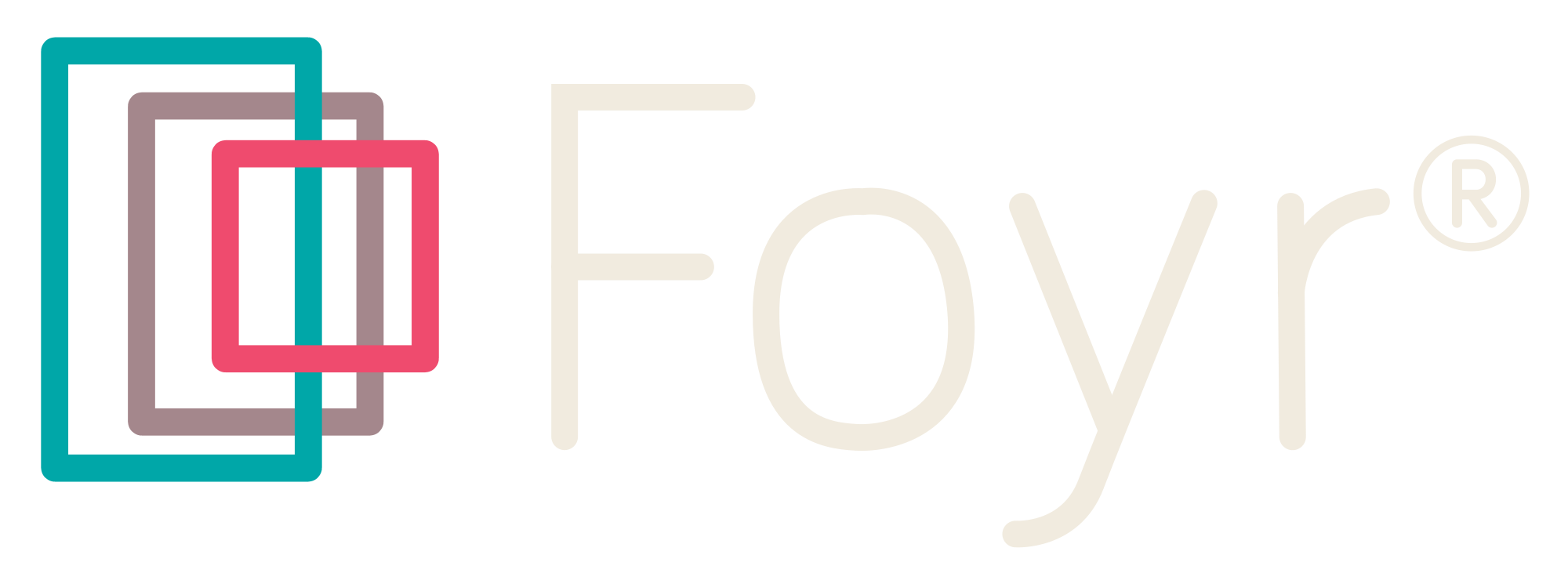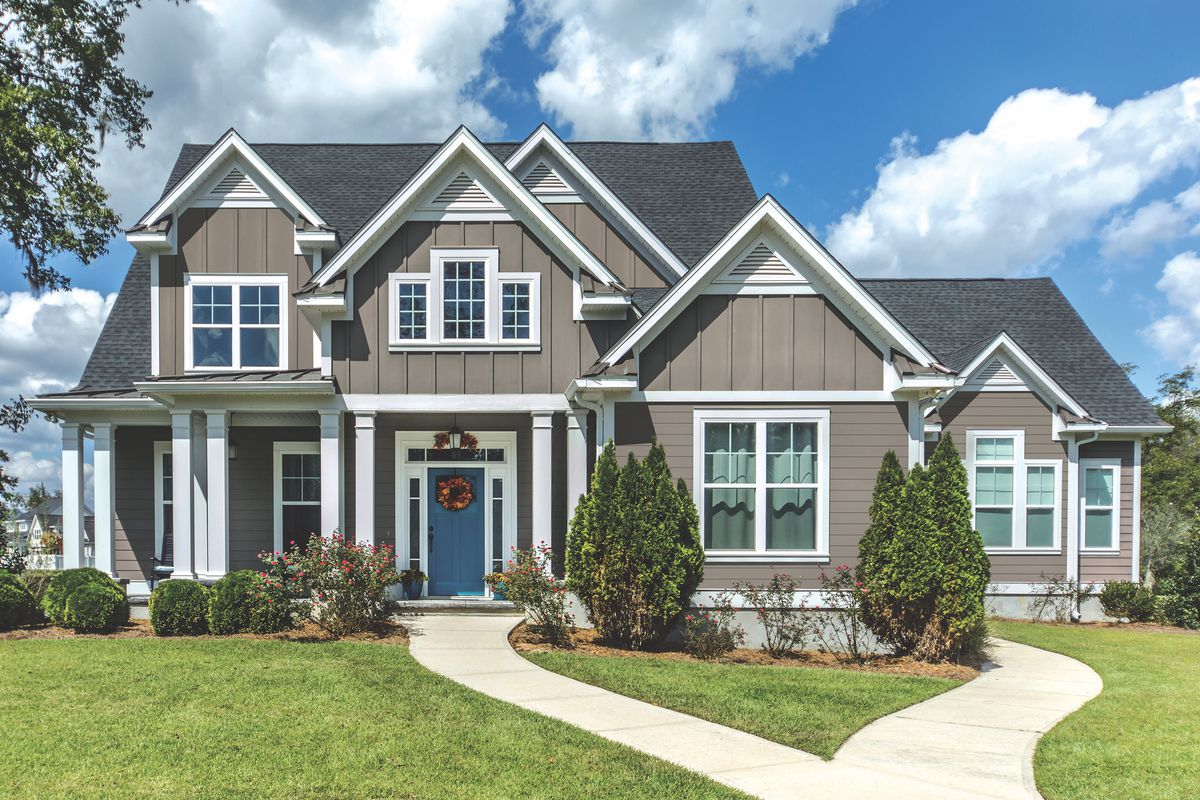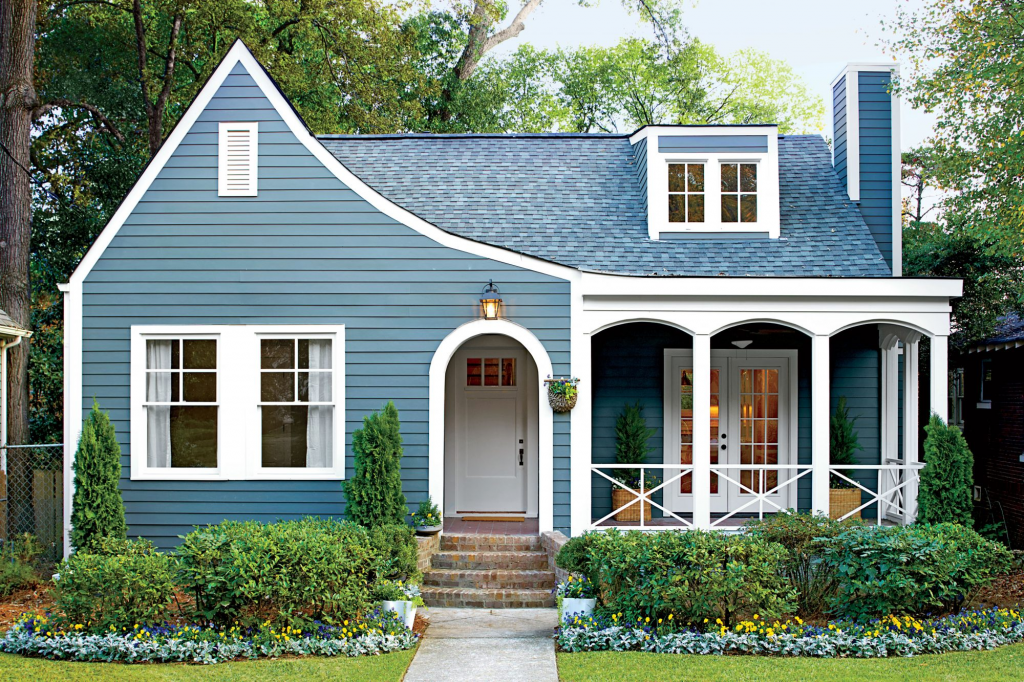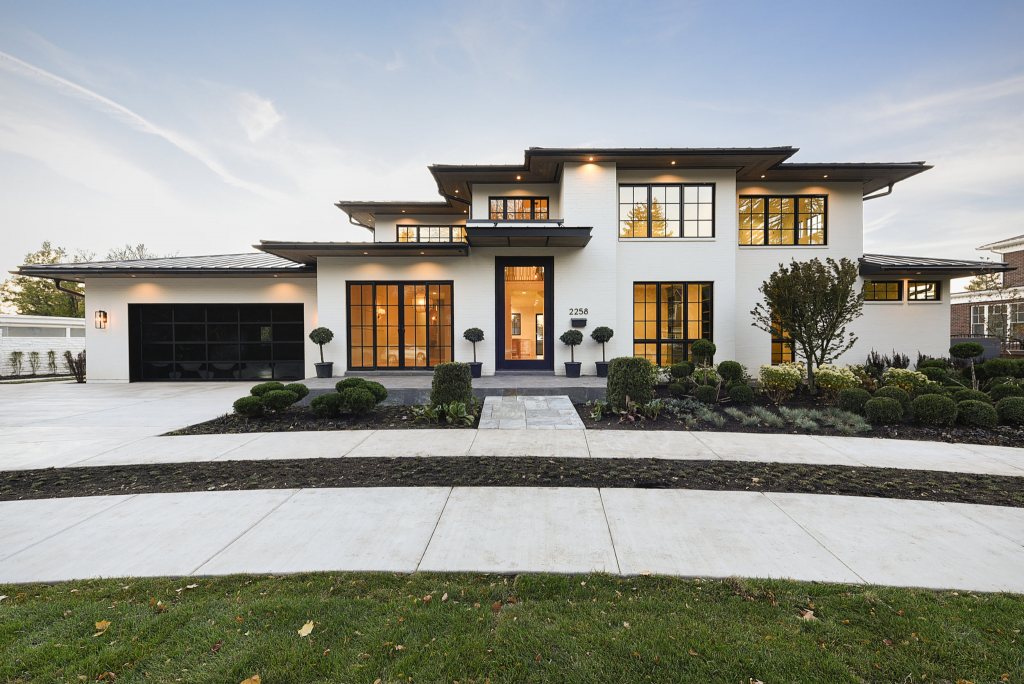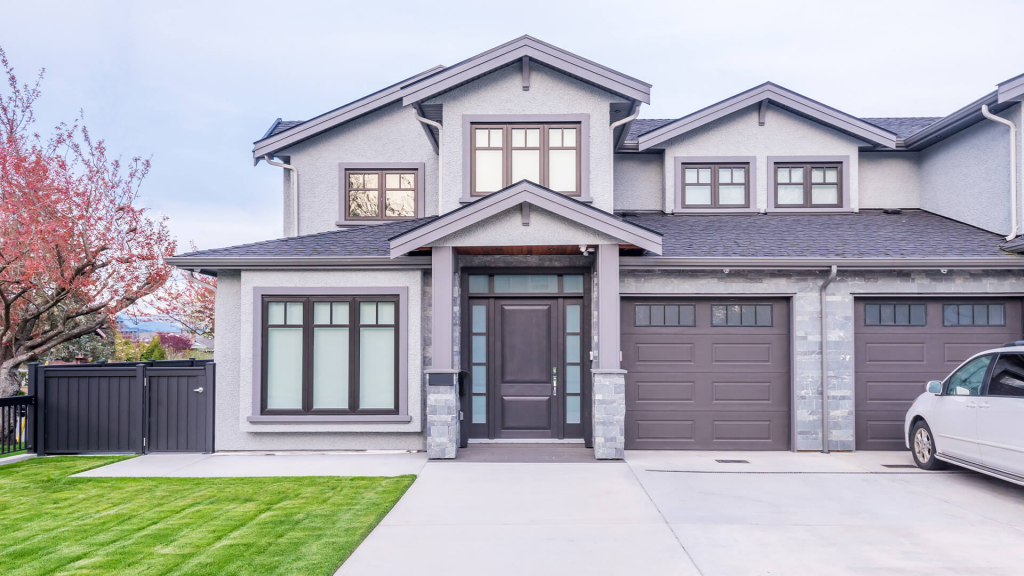Table of Contents
When most people think of redoing their home, they often envision a complete interior and exterior transformation. While some homes may benefit from a full-scale renovation, many only require a fresh coat of paint and minor exterior upgrades to enhance their overall look, feel, and curb appeal. In fact, studies show that repainting a home’s exterior can boost its resale value by up to 5% and significantly improve first impressions.
Adding exterior paint is one of the most cost-effective ways to revamp a home’s appearance, making it a popular choice among homeowners looking for a fresh look without a hefty price tag. According to the National Association of Realtors (NAR), buyers are willing to pay an average of 7% more for a home with excellent curb appeal, highlighting the impact of exterior improvements.
However, while a new coat of paint can make a dramatic difference, choosing the right color is crucial. Color psychology plays a key role in home design—neutral tones like white, gray, and beige are the most appealing to buyers, while bolder shades can impact perceived home value. Since over 75% of homeowners regret at least one design decision after remodeling, it’s essential to carefully evaluate multiple color options before committing to a full exterior makeover.
With modern home design software – homeowners can preview different paint colors on their property before making a final decision, reducing the risk of costly mistakes. In this article, we’ll provide expert guidance on selecting the best exterior paint color and share additional pro tips for enhancing curb appeal effectively.
Read also – How To Design Your Dream House?
Common Color Schemes for Exterior House Paint Colors
Image Credit: Southern Living
Some clients are only concerned with what’s in style right now, while others want a classic look. Ultimately, your client’s tastes and preferences will drive the final decision about exterior paint colors. If you’ve already been working with a specific client before the exterior color was discussed, then you might a good idea of their style and a sense of where to start.
Sometimes a client simply isn’t sure what they want. In these cases, it might be helpful to show them some common color schemes that work well with the existing style of their home – especially if they won’t be doing any significant construction or home remodeling to the exterior.
We’ve listed some of the most common color schemes you’ll see when driving through popular neighborhoods; these might be a helpful starting point for discussions with a client.
According to Better Homes and Gardens, these are some of the most popular current styles for home exteriors:
| Exterior Colors | Shades They Go Well With |
| Dark green | Dark wood undertones, black, taupe, off-white, or copper accents |
| Charcoal gray | Black, blue-gray, pure white, and natural wood tones |
| Cream | Natural wood, black, pastel, light blue, or copper accents |
| Classic navy | White, light gray, dark gray, and wood accents |
| All black | Other accent color, or if the entire exterior is the same color |
| Jarret Yoshida, principal designer at Jarret Yoshida Interior Design says, “Dark (Hollingsworth) Green works gorgeously, which 95% of new construction is built with so it’s a real winner in my book. It has a gorgeous translucent effect that opens up a space while complementing nearly any kind of decor in the neutral ranges. Hollingsworth green is one of those colors from Benjamin Moore’s HC Collection that make me wish I lived in an English garden with fruit trees and cutting beds.” |
Read also – 14 Elegant Exterior Facades for a Flawless Exterior
Ensuring the Best Possible Curb Appeal
Image Credit: W Design Collective
What should you do if you’re totally convinced that one specific color is the best choice for a home, but the client isn’t sure or they outrightly disagree? It’s up to the interior designer to respectfully make a strong case for their recommendation, even if the client ends up choosing something else.
One strategy to get the client on board with your color choices is to show them how the new paint job will significantly enhance the curb appeal of the home.
This enhanced curb appeal will help them if they choose to sell the home, and it will improve the exterior appearance, ensuring that the homeowners enjoy the house until they either decide to sell or do something new!
Picking a color that’s a little bit “out there” might make it difficult to sell the house, later on, potentially costing the homeowners money or lost time.
Read also – How To Use Color Theory in Interior Design?
Popular Paint Brands
Image Credit: Build Magazine
Paint brands are able to replicate just about any color, but there are significant differences in the quality and finish of different manufacturers. Make sure that you help your client understand the pros, cons, and costs associated with each brand so they can make a well-informed decision.
Some of the most widely used paint brands include:
- Sherwin Williams
- Benjamin Moore
- Valspar
- Behr
- Rust-Oleum
- Glidden
Other key factors that you’ll want to consider include the exterior materials, as this will determine what kind of paint is needed for long-term durability and appeal. The materials most often used for home exteriors include:
- Brick
- Cement
- Stucco
- Vinyl siding
- Wood
- Aluminum siding
Be aware that specific brands specialize in the paint for special purposes; a representative at your local supplier can help you understand the differences and make an informed decision.
Regardless of which paint brand your client chooses to use, you can easily provide lots of options by going to a local home improvement store or specialty paint shop and requesting paint chips (e.g., paint samples).
Read also – 11 Best Home Decorating Ideas
10 Tips for How to Choose the Exterior Paint Colors for a House
1. Follow the `rule of threes`
Follow the “rule of threes” and create a color palette when first starting your project. Make sure you understand which color family will work best. Then you can use an accent to create a pop of color and bring together the whole exterior color scheme.
You can do this by applying an accent color on a more subtle exterior feature like a front door, flower boxes, railings, shutters, and more. After you’ve picked the main exterior color you can then add two more accent tones or colors for an attractive look that has variety with going overboard. This method gives you or your client the option to show off some personality without changing the entire exterior, or without using a non-traditional color over most of the house.
The subtlety of a nice accent will help preserve curb appeal and keep the house marketable should the owners sell. Redoing the exterior of a home is expensive, and potential buyers shouldn’t envision a costly fix as soon as they see the home.
Read also – 9 Best Home Interior Design Tips
2. Color Combinations
Study common color combinations for the home’s specific architectural style. Victorian homes, for example, can have very classic color combinations. However, they can also have bright, vivid color contrasts that some homeowners might find unappealing.
Sometimes, Victorian-style homes can use 5 colors or more on one exterior. Modern homes tend to use 3 colors at most. Picking the right colors ultimately depends on your client’s long-term goals.
If their goal is to restore the home to its original state, then you’ll need to do a lot of research on that specific home and related styles before you can make an informed recommendation and final decision.
| Jarret Yoshida, principal designer at Jarret Yoshida Interior Design says, “I have been using gray (Silver Bells from Benjamin Moore) for exterior paint for the past two decades and it is one of the few paints with a name I have memorized. Not too dark that it makes a space oppressive, not too light that you barely notice it, it also isn’t too warm or cold (too much blue or too much pink) so it works well with any flooring. It’s a real stand-out champion for our firm and is one of the few colors I am comfortable giving to people when a client asks for a virtual recommendation because it is so flexible.” |
Read also – 11 Amazing Home Decor Trends
3. Ensuring Choice of Exterior Paint
In addition to ensuring that your choice of exterior paint colors makes sense for your own home, it’s also a good idea for you to take into account the other types of homes (and colors of these homes) in the surrounding neighborhood.
For example, does your client live in a historical neighborhood? Are there a lot of traditional homes nearby? Going way outside the norm might cause more trouble than good for your client.
If your client’s neighborhood has all-white exterior walls, make sure you follow the same style, but go for off-white, or other versions with undertones. Going for pure white walls will cause eye glare, and can show dirt with time. Choose colors that get along well with the neighborhood houses, but also the ones that can set you apart, and prove to be durable for you.
Read also – 15 Interior Decorating Mistakes That Make Your Home Look Smaller
4. Take Your Climate to Choose Color
Take your climate into account. For example, in the Southwest U.S., where high temperatures in the summer regularly exceed 100 degrees, black might be a poor color choice.
Also, many houses in this part of the country are made from stucco and tile, or similarly resilient materials that keep the home’s interior temperature cooler. Make sure you’ve factored potential weather conditions into the decision.
Read also – 12 Ways To Incorporate Wabi-Sabi Interior Design in Your Home
5. Adding Accent Colors
Understand how to use the home’s exterior accents as an additional way of adding color. We talked about adding accent colors in the first recommendation, but here were referencing the use of other materials to offset and complement your primary exterior color.
This would require you to match the new house color with other design features or standard exterior components, including gutters, shutters, soffits, and garage doors. These components come in all different colors and styles, including unpainted – which can be one of the most appealing and desired accents.
Natural wood, copper, or black are all commonly used and they can stand out in a very striking way. Remember that materials used to build the home can also influence the final exterior paint color and serve as a pleasant accent, including brick (ranking from orange and brown to dark red), natural stone, or logs.
Read also – Installation Day Tips for Interior Designers
6. Test the Paint
Test the paint by getting samples and putting them on different parts of the home’s exterior. Try adding them to areas that won’t be clearly noticed from the street, if possible.
Also, try to add the main color to different sections of the home so you can get a true sense of how the color looks during the morning, evening, afternoon, and in significant shade or cloud cover. When you’re testing out paint swatches, be sure to add some on the exterior of your home near the top of house so you can see how well it matches with the existing roof color.
Read also – Types of 3D Rendering and Services in the Different Industry
7. Consider the Natural Surroundings
Consider the home’s natural surroundings. If you live in a desert area or a green, mountainous region then you might want to reflect these traits in the home’s exterior.
Forest green is a common choice for homes in the Pacific Northwest, while white is very traditional for farmhouses across the mid-west (in contrast to a red barn) which might be found in the middle of beige fields. These colors and features could help inspiration strike and tie the entire design together.
8. Accent Colors to Accentuate Architectural Details
Use accent colors to accentuate architectural details. Does the home have unique features that deserve to be highlighted and appreciated? Using white trim of a different trim color can help show off these features in a way that doesn’t distract from the primary exterior paint choice, but still draws attention to aspects that make the home especially appealing and add to its overall character.
| Artem Kropovinsky, founder and principal designer at Arsight says, “A dark and timeless classic for exterior walls that can be used as an accent paint (for doors, garage doors, windows, corbels – Benjamin Moore’s “Hale Navy”. This means that it has a rich, deep hue which adds elegance and depth to any space. It is suitable for all styles of decor.” |
Read also – 20 Best Wall Decor Ideas for Your Home
9. Match the Existing Color
You may not need to pick an entirely new color. Using advanced color-matching technology, your local specialty paint supplier might be able to match the existing color of your house from a simple paint chip. Perhaps a new coat of paint would actually provide the fresh, revived look that your clients are craving? Or, a new coat of the same paint with some lively, thoughtful accents?
If your client wants to add exterior features like brick or stone facades, then simply keeping the same color might be a wise choice as it will allow the new feature to stand out even more. Or, if a new roof is being installed, there might be an opportunity to slightly adjust the current house color so that it matches an accent color in the new shingles, metal roofing, tiles, or any other material being used.
Read also – 35 Best Kitchen Color Schemes for All Types of Kitchen
10. Shade and Tone
Don’t forget about shade and tone. Just because your client has their heart set on a specific color, you can’t be sure that they understand just how light or dark the shade should be. While lighter colors tend to make a house look bigger, dark color shades are more full, imposing, and constricted.
Even adjusting the shade slightly can make a big difference in the appeal of a specific color choice, and it’s highly recommended to try at least 2-3 different shades before settling on a final version. You and your clients really need to see the house in a variety of lighting scenarios to understand how the shade will change.
Read also – 10 Ways to Turn Your Home from Toxic to Eco-friendly
Use Foyr Neo to Find the Best Exterior Color for Your Home
Interior design tools like Foyr Neo were specifically created to help amateurs, the DIY crowd, and professionals create the stunning home designs needed to visualize dreams and turn projects into reality.
Using Foyr Neo’s full suite of tools, anyone can quickly create full-home designs that depict the interior and exterior of a house, along with hundreds of detailed additions. The photo-realistic renderings will help you show your client how the project will look, and you can even use sophisticated lighting tools to portray different times of the day.
If you’re ready to tackle a big exterior project, don’t leave the end results to chance. Use Foyr Neo to “wow” your clients, get buy-in faster, and earn referrals for your top-notch work.
Sign up for Foyr Neo’s free trial for 14 days to experience the power of a platform that was made by designers, for designers.
FAQs
Consider using a main color, accent color, and trim color to create balance.
Use sample pots or digital visualization tools to see how colors look in different lighting.
Opt for durable finishes like satin or semi-gloss for better weather resistance.
Select high-quality paint formulated to withstand UV rays and weathering.
Yes, neutral palettes tend to have broader appeal among potential buyers.






